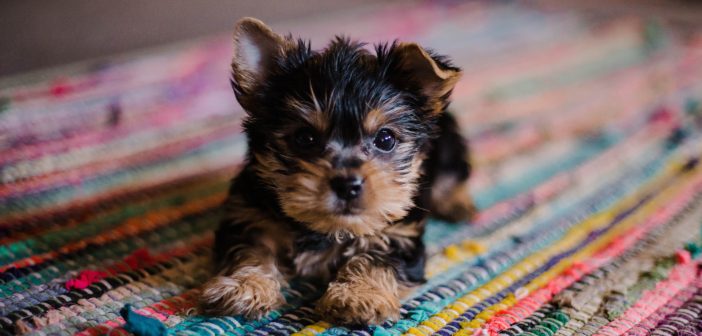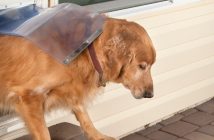You may be considering a new puppy for your children this Christmas. There are several things to consider before making that total commitment decision. One of the major decisions will be centered around house training your new pet!
It’s easy to get caught up in the all the fun of getting, and perhaps even surprising the kids, with your cute new bundle of job. But once you have the beloved puppy, how will you house train the adorable little creature who doesn’t yet understand that piddling in the house isn’t acceptable? It’s a job that takes total dedication and often a lot of time to accomplish. Here are a few general guidelines in hopes of providing some insight to get you thinking in the right direction when it comes to house training your new puppy.
Pick a method of training whether it’s paper, pads, crates, or outside.
Paper and Pads: Put down papers or pretreated pads on a floor that’s easily cleanable and can serve as the dedicated spot and start encouraging the new pup to use these areas for going to the bathroom. When you notice the puppy walking around and sniffing the floor, gently pick him up (without talking) and carry him over to the designated spot, and then praise him when he actually goes to the bathroom there. When he finally goes directly to the area and becomes consistently successful on his own, move the paper or pad closer to an outside door. This method does encourage the pet to eliminate inside and the method may take you longer to house train. However, this method is good for beginning the process right away during the holiday season when it might be really cold and snowy outside.
Crate: The most important factor of crate training is having the correct size crate. It should be large enough for a bed, and large enough to still accommodate your puppy when he’s no longer a pup, but a full-grown, adult dog. There are dog crate models that come with a divider panel that can be adjusted as your puppy grows. On the flip side, long term problems are also often caused by using a crate that is too large. As humans, we figure the bigger the space for my pup the better, but that’s not always the case. The object is to give your new puppy a comfy cozy place where he feels safe and secure.
If you opt for crate training, have the crate ready the day you bring your puppy home. Place a soft blanket and a dog toy inside and let the puppy discover it and venture in on his own! It’s great to put a blanket and chew toy inside the crate, but you don’t want to leave food and water inside the crate. The idea behind create training is that puppies don’t like to lay in their own mess. They’re capable of controlling their bladders and bowels much longer than we realize, but still shouldn’t be left entirely unattended in a crate for longer than 7 or 8 hours. Max. Whenever the puppy cannot be watched, he should be placed in the crate. Immediately before putting him in the crate, take him outside (or to the designated puppy paper place). Immediately after taking him out of the crate, take him outside (or to the designated puppy paper place).
Nighttime is definitely the time to be placed in the crate, just be sure to give them bathroom time directly before and directly after. Crate training teaches the puppy that when he feels the urge to go, he is capable of holding it. This is a great advantage of crate training.
Outside: House training by going outside requires constant supervision. This works great for people who work at home, are retired, or have the luxury of taking their pet to work with them. The puppy must be watched at all times to avoid accidents happening. There is minimal margin for error with this method. When the puppy is taken outside pay attention and as soon as he does his business, praise him and go back inside immediately. This is not the time to play outside as doing so will only serve to confuse the purpose of going out. You may need to have an alternate training method as a backup for when you must be away. The crate method may be the easiest backup plan.
Be persistent, consistent, and try to have them on a regular schedule.
Just like us humans, puppies will need to use the bathroom when they first wake up, before going to bed, and soon after they eat and drink. Feeding them at the same time every day will help with house training. Take special notice at the amount of time it takes them to do the “potty-dance” after eating.
Everyone in the family should use the same words to communicate with the puppy. If you use “need to go outside?” to program your pet to understand that means it’s time to do your thing, then everyone must use the same exact phrase. When outside choose another phrase like “go potty” to encourage him to get busy. When the good deed is complete a consistent “good dog” with returning inside is also important. Use a totally different phrase like “let’s play” when it is time to go out and have fun. Having a special treat for house training rewards may also assist in the process. Using consistent commands will definitely help initiate consistent results.
Praising and scolding.
Praise your puppy when things go right. Refrain from scolding or punishing when they don’t go right. Never rub their noses in their mistake!! You’ll only make matters worse and cause them to hide to do their duty. Puppies have really short memories so rubbing your pup’s nose or scolding them when you find an accident that happened earlier will not relate the punishment to the previous act. If you don’t catch your puppy in the act, clean it up and forget it! After all, it is your fault for not watching him closely, he’s just a baby with four legs.
When you actually do catch your pup in the act, quickly and calmly pick him up and say “no.” Hold their tail down to help them stop and either put them on the paper/pad or take them outside. Don’t get mad or use an angry voice, they feel the anger just as a child would. Use a consistent phase like “finish your job” while you patiently wait for them. And don’t forget to follow with the “good dog” once the act is complete.
Overreaction and severe scolding will surely scare your furry new family member. Punishment will not speed up the house training ordeal and could actually make your new puppy nervous or afraid every time he needs to go to the bathroom. Puppies do not rationally understand discipline, so yelling often just causes him to fear his owners.
It’s also important to remember that when your puppy gets excited when they see you, or gets scared by something, he may urinate. Discipline is not necessary because the puppy simply has no control of excitement urination. They should outgrow this between 4 to 7 months of age although some never do. Simply ignore the mess and clean it up.
Bottom line.
Spend as much time as humanly possible with your new puppy. Stay calm and be very patient with the house training. It will take time and dedication but in the end will be beneficial to both of you with a lasting and loving relationship.





4 Comments
Great article! People don’t realize there is more than one method to potty train a dog. You did a great job covering the options! People need to remember they would never scream at their baby for peeing in their diaper, puppies have to mature and learn before they go outside consistently.
ADOPT A SHELTER DOG!
Kristie
It is difficult to house train a puppy. Thanks for the reminder. I have a new pup coming to our house next week It will be 7 weeks old on Monday.
Great post.
We are going through just that right now and it’s almost successfully finished. You are so right that time, patience and dedication are a must. From the moment we bring our puppies home it’s now work 24 hours a day until successful.
Definitely a fine line between praising and scolding. I think too many pet owners put too much emphasis on the latter with their new puppy, whereas in my experience the positive reinforcement seems much more effective!
A lot of people tend to tell their puppy off after the event which I think is too late.